North Rhine – Westphalia Jan 18-23 2019
I am back slumming at McDonalds – the only consistently reliable wi-fi in Europe (plus bathroom, garbage disposal, sleeping place and water source). Each country’s McDonalds has a “deal” – in Germany it is the 1€ sundaes and small coffees (in the UK it is 1£ McFlurries). Otherwise the food is grossly overpriced. A surprising number don’t have electrical plugs. As I write this, I am at one south of Dortmund and it is packed with 20 somethings at 11:30 at night.
Münster (pop 300,000, 61,500 students). From the Greek “monastery”, it is in the northern part of the state and is considered to be the cultural centre of the Westphalia region. Today it is known as the bicycle capital of Germany.
History. Dating from the late 8th century, it was a leading member of the Hanseatic League in the Middle Ages. In 1534, the Anabaptist rebellion occured here – they claimed all property, burned all books except the Bible, and called it the “New Jerusalem”. John of Leiden believed he would lead the elect from Münster to capture the entire world and purify it of evil with the sword in preparation for the Second Coming of Christ and the beginning of the Millennium. They went so far as to require all citizens to be naked as preparation for the Second Coming. However, the town was recaptured in 1535; the Anabaptists were tortured to death, their corpses were exhibited in metal baskets (often confused with cages), which can still be seen hanging from the tower of St Lambert’s Church.
Part of the signing of the Peace of Westphalia of 1648 that ended the Thirty Years War was held in Münster guarantying the future of the prince-bishop and the diocese; the area was to be exclusively Roman Catholic.
The University of Münster (today called “Westphalian Wilhelms-University”, WWU) was established in 1780. It is now a major European centre for excellence in education and research with large faculties in the arts, humanities, theology, sciences, business and law. WW II. In the 1940s, the Bishop of Münster was one of the most prominent critics of the Nazi government. In retaliation, Münster was heavily garrisoned during World War II, and five large complexes of barracks are still a feature of the city. Münster was bombed on 25 October 1944 by 34 diverted B-24 bombers and 91% of the Old City and 63% of the entire city was destroyed. In the 1950s the Old City was rebuilt to match its pre-war state
In 2004, Münster won an honourable distinction: the LivCom-Award for the most livable city in the world with a population between 200,000 and 750,000. Münster is famous for its bicycle friendliness and the student character of the city.
The city’s built-up area is quite extensive. There are no skyscrapers and few high-rise buildings but very many detached houses and mansions.
Climate. The perception of Münster as a rain-laden city isn’t caused by the absolute amount of rainfall but by the above-average number of rainy days with relatively small amounts of rainfall. The average temperature is 9.4 °C (48.9 °F) with approximately 1500 sun hours per year. Consequently, Münster is in the bottom fifth in comparison with other German cities. The winter in Münster is fairly mild and snowfall is unusual.
Schloss Nordkirchen is a palace between Munster and Dortmund. The schloss was largely built between 1703 and 1734 and is known as the “Versailles of Westphalia” since it is the largest of the fully or partly moated Wasserschlösser in that region. It was originally one of the residences of the Prince-Bishopric of Münster.
In 1959, the schloss was purchased by the State of Nordrhein-Westfalen and has since been a state-run college specializing in the training of future tax inspectors. Parts of the interior of the schloss are open to the public, as is the surrounding park. Inside the schloss, an up-market restaurant offering Westphalian cuisine looks out into the large formal garden that faces the northern façade of the schloss. The schlosschapel may be rented for weddings.
The schloss stands on a rectangular island surrounded by a broad moat-like canal. The island’s four corners are accentuated by four small free-standing pavilions. The garden gives onto a landscaped park of 170 hectares, both with many life size marble statues.

DORTMUND (pop 601,402), the third largest city of Germany’s most populous federal state of North Rhine-Westphalia after Cologne and Düsseldorf, and Germany’s eighth largest city. It is the largest city (by area and population) of the Ruhr, Germany’s largest urban area with some 5.1 million (2011) inhabitants, as well as the largest city of Westphalia.
History. On the Emscher and Ruhr rivers (tributaries of the Rhine), it was founded in 882, it was the “chief city” of the Rhine, Westphalia, the Netherlands Circle of the Hanseatic League and became one of Germany’s most important coal, steel and beer centres. Dortmund consequently was one of the most heavily bombed cities in Germany during World War II. The devastating bombing raids of 12 March 1945 destroyed 98% of buildings in the inner city centre. These bombing raids, with more than 1,110 aircraft, hold the record to a single target in World War II.
The region has adapted since the collapse of its century-long steel and coal industries and shifted to high-technology biomedical technology, micro systems technology and also services.
Dortmund is home to many cultural and educational institutions with over 49,000 students. Nearly half the municipal territory consists of waterways, woodland, agriculture and green spaces with spacious parks, in a stark contrast with nearly a hundred years of extensive coal mining and steel milling in the past. Dortmund is home to Ballspielverein Borussia 09 e.V. Dortmund, commonly known as Borussia Dortmund, a successful club in German football.
Dortmund Hauptbahnhof (Hbf or Central Train Station). Originally built in 1847, it was replaced in 1910, then one of the largest stations in Germany, but was destroyed in an Allied air raid on 6 October 1944. The main station hall was rebuilt in 1952 in a contemporary style. Its stained glass windows feature then-common professions of Dortmund. The station has over 600 departing trains on a typical weekday.
German Football Museum. I don’t enjoy watching football nor the museums that recount the history of the game from the first game – tons of team jerseys.
LWL Industrial Museum. The pit head tower at Hannover Colliery stands out like a medieval fortress in north Bochum. The steam hauling engine, built in 1893 is the oldest extant example of its type. From the Malakoff tower, the colliers would travel 750 metres down to bring the coal. In 1973 the Hannover Colliery, the last working mine in Bochum, closed its operations for ever. It is closed December-March. Free
Museum Ostwall. This contemporary art museum is on the 4th and 5th floors of Dortmunder U, a renovated 1927 brewery “skyscraper” once owned by the Union Brewing Company, then the largest in Germany. I actually enjoyed this with lots of interesting pieces. Free
BOCHUM/HERNE/BOTTROP/RECKLINGSHAUSEN
Botanical Garden of Ruhr University. Maintained by the Ruhr University Bochum, it was opened in 1971, with later developments: tropical house, 1976; desert house, 1988; Chinese garden, 1990; savannah houses, 2000.is open daily without charge.
The outdoors area is organized into geobotanical regions, including forest, coasts, meadows, prairies and marshes from the Americas, Asia, and Europe. It also contains an alpine garden and succulent garden. Its Chinese garden (1986-1990) using skilled gardeners donated by Tongji University in Shanghai as a sign of friendship in the southern Chinese style. A pond covers half its area. The garden’s greenhouses include a tropical house, desert house, savannah houses and alpine house.
ESSEN (pop 590,000). It is the central and second largest city of the Ruhr, the largest urban area in Germany, the ninth largest city of Germany, as well as the fourth largest city of the federal state of North Rhine-Westphalia.
History. Founded around 845, Essen remained a small town until industrialization. The city then — especially through the Krupp family iron works — became one of Germany’s most important coal and steel centres. Heavy industries declined in the last decades of the 20th century. Essen is one of the largest urban areas in Europe comprising eleven independent cities and four districts with some 5.3 million inhabitants. It is 21 km from north to south and 17 km from west to east.
WWII. Tens of thousands of forced labourers worked in the 350 Nazi Essen camps. As a major industrial centre, Essen was a target for allied bombing, the RAF dropped a total of 36,429 tons of bombs on the city in over 270 air raids destroying 90% of the centre and 60% of the suburbs.
Although no weaponry is produced in Essen any more, old industrial enterprises such as ThyssenKrupp and RWE remain large employers in the city. Foundations such as the Alfried Krupp von Bohlen und Halbach-Stiftung still promote the well-being of the city, for example by supporting a hospital and donating €55,000,000 for a new building for the Museum Folkwang, one of the Ruhr area’s major art museums.
Zollverein Coal Mine Industrial Complex in Essen is a large former industrial site inscribed into the UNESCO list of World Heritage Sites in 2001, and is one of the anchor points of the European Route of Industrial Heritage.
The first coal mine on the premises was founded in 1847, and mining occurred from 1851-1986. For decades, starting in the late 1950s, the two parts of the site, Zollverein Coal Mine and Zollverein Coking Plant (erected 1957−1961, closed 1993), ranked among the largest of their kinds in Europe. Shaft 12, built in the New Objectivity style, was opened in 1932 and is considered an architectural and technical masterpiece, earning it a reputation as the “most beautiful coal mine in the world”.
A totally new twelfth shaft designed as a central mining facility was opened in 1932, it had a daily output of up to 12,000 tons, combining the output of the four other existing facilities with 11 shafts. It had a simple, functional Bauhaus design with its mainly cubical buildings made of reinforced concrete and steel trusses. The shaft’s characteristic Doppelbock winding tower in the following years not only became the archetype of many later central mining facilities but also became a symbol of German heavy industry.
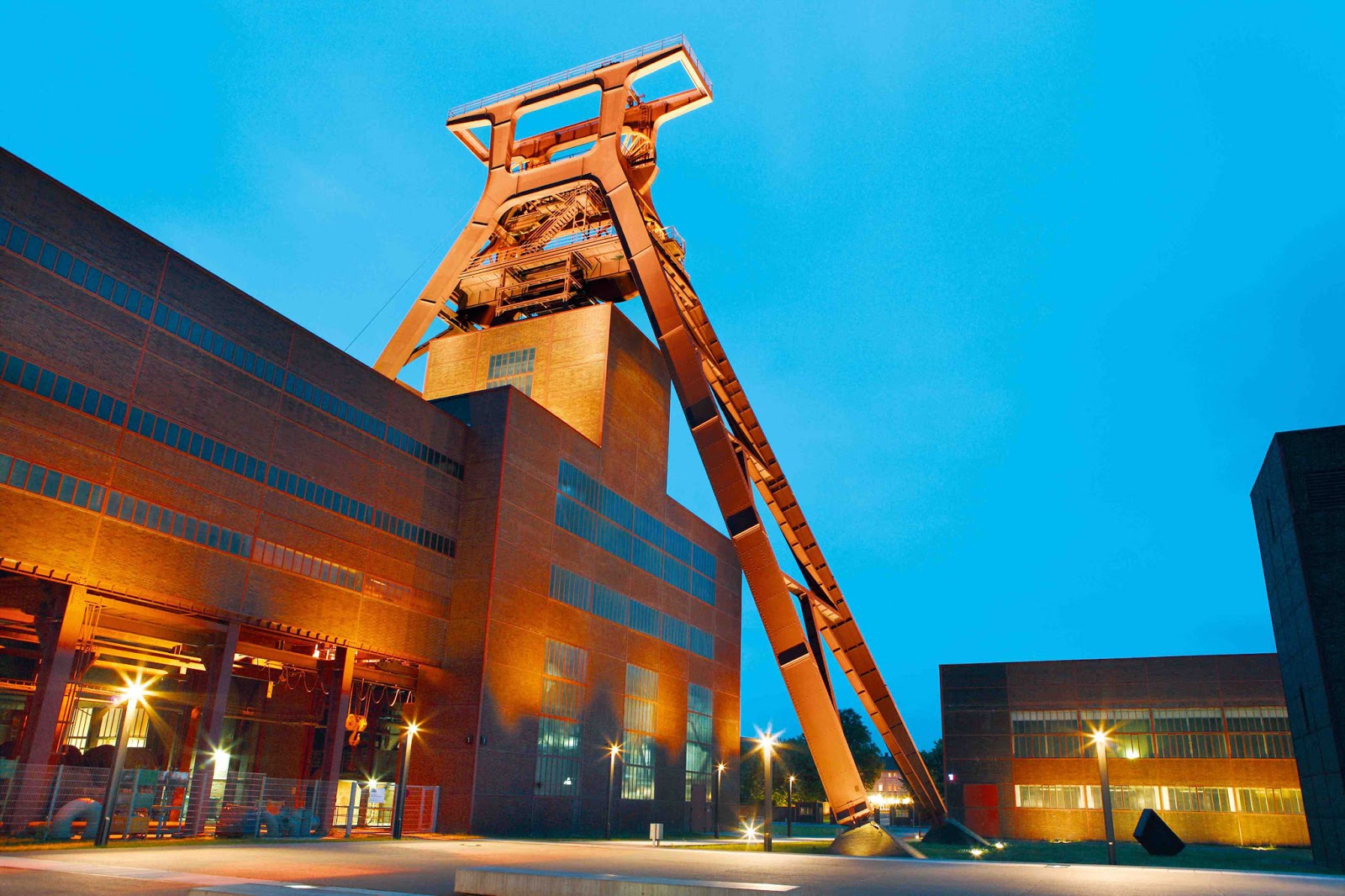
Red Dot Design Centre. The Red Dot Design Award is an international product design and communication design prize awarded by the Design Zentrum Nordrhein Westfalen in Essen. There are prize categories for product design, design agencies, and design concepts in several fields of manufacturing, including furniture, home appliances, machines, cars and tools. Designers and producers can apply for the prizes with the winners being presented in an annual ceremony. Winning products are presented in the Red Dot Design Museum on the premises of the historical Zollverein Coal Mine Industrial Complex in Essen, built in 1997. A second was built in Singapore in 2005 and in 2013, the Red Dot Design Museum Taipei was opened. The Red Dot Design Award had more than 15,500 submissions from 70 countries in 2014. The competition focuses on young, up-and-coming creative talents, designers and design companies around the world.
The main exhibit was Design in the Age of Big Data.
Essen Hauptbahnhof is south of the old town centre. It suffered extensive damage in World War II and was almost completely rebuilt in the 1950s and 1960s. Some 400 trains pass through the station each day, making Essen Hauptbahnhof the third busiest railway station in the Ruhr Area after Dortmund and Duisburg.
Museum Folkwang. This is the premier art gallery in Essen exhibiting many masterpieces included 4 Van Goghs, many impressionists and several Rhodins. Free
Gruda Park & Botanical Garden. The botanical attractions include the Alpinum, the Westphalian Farmer’s Garden, the Rose Garden, the Shrubbery, the Conifer Collection, the Asia Section and the Heath Section. €2
OBERHAUSEN. On the river Emscher between Duisburg and Essen, it was formed in 1862 following inflow of people for the local coal mines and steel mills. The Ruhrchemie AG synthetic oil plant was a bombing target. In 1973 Thyssen employed 14,000 people in Oberhausen in the steel industry, but ten years later the number had fallen to 6,000.
Gasometer Oberhausen is a former gas holder that has been converted into an exhibition space. The Gasometer is an industrial landmark, and an anchor point of the European Route of Industrial Heritage.
It was built in the 1920s, and reconstructed after World War II. In the 1920s the coal and steel industry produced blast furnace gas and coal gas as a by-product of iron production and coking, while the steel industry as well as coking used large amounts these gasses or alternative fuels. As supply and demand for gas varied independently, sometimes excess gas had to be flared off, while at other times additional fuel had to be purchased. The Gasometer was built as a buffer: storing excess gas and releasing it again when demand exceeded production. It had a maximum capacity of 347,000m³, a height of 117.5m and diameter of 67.6m.
In later years many coking plants and iron works closed, reducing supply as well as demand for the gas stored and natural gas became cheaper. The Gasometer decommissioned in 1988. In 1992 the city council acquired the building and converted it to an exhibition space. The former pressure disc was fixed at 4.5m height, with a 3000m² exhibition space on the ground floor below. The main exhibition space, on top of the pressure disc, was fitted with a stage and seating for 500 people. Lifts and stairs were fitted to provide visitors access to the roof. The third level has images projected onto the ceiling viewed from seats surrounding the centre or from a mirror on the floor.
Large exhibits change about once per year. The present was photography of mountains and was excellent. €7 reduced

DUISBURG (pop 500,000). At the confluence of the Rhine and the Ruhr, in medieval times, it was a member of the powerful Hanseatic League, and later became a major centre of iron, steel and chemicals. For this reason, it was heavily bombed in World War II. Today it boasts the world’s largest inland port, with 21 docks and 40 kilometres of wharf. The city supports a large Turkish community.
Lehmbruck Museum (Center for International Sculpture). Sculptures by Wilhelm Lehmbruck (1881- 1919 by suicide. ) are on one side and works by other 20th-century sculptors on the other. This is complemented by paintings by 19th- and 20th-century German artists.€9
DÜSSELDORF (pop 613,000) is the capital and second-largest city of the most populous North Rhine-Westphalia after Cologne, as well as the seventh-largest city in Germany. At the confluence of the Rhine and its tributary Düssel, the city lies in the centre of both the Rhine-Ruhr and the Rhineland Metropolitan Regions with the Cologne/Bonn urban urban area to its south and the Ruhr to its north. “Dorf” meaning “village” in German, the “-dorf” suffix is unusual for a settlement of Düsseldorf’s size.
It ranked as the sixth most livable city in the world. Düsseldorf Airport is Germany’s third-busiest airport after Frankfurt and Munich. Düsseldorf is an international business and financial centre, renowned for its fashion and trade fairs, and is headquarters to one Fortune Global 500 and two DAX companies. Messe Düsseldorf organises nearly one fifth of premier trade shows.
Kunst Palast. The exhibit was sports cars 1950-70s titled “Drive by Design” – with all the classic cars as they premiered. €9
Kunsthalle Düsseldorf is an exhibition hall for contemporary art built in 1967 using recast concrete. Hosting an array of exhibitions, but without its own collection, new talents and “big” names will continue to find their place in this out-of-the-ordinary venue. €9
Kunstsammlung Nordrhein-Westfalen is the art collection of the German Federal State of North Rhine-Westphalia founded in 1961. It has earned an international reputation as a museum for the 20th century art. The building at Grabbeplatz (K20), with its characteristic black granite façade, was inaugurated in 1986.
With major works by Pablo Picasso, Henri Matisse, and Piet Mondrian, among others, as well as a wide-ranging ensemble of circa 100 drawings and paintings by Paul Klee, the permanent collection of the Kunstsammlung offers a singular perspective of classical modernism. The collection of postwar American art includes works by Jackson Pollock, Frank Stella and by pop artists Robert Rauschenberg, Jasper Johns, and Andy Warhol. Free
Film Museum. An interesting museum with many special effects exhibits. Free on Mondays and after 5pm.
Elten and Tuddern (formerly Netherlands). On the way to Aachen, I took a round-about route next to the border of Belgium to see this area.
At the end of WW II, plans were made in the Netherlands to annex German territory as compensation for the damages caused by the war. The Dutch state wanted 25 billion guilders but reparations would not be given in monetary form. In its most ambitious form, this plan included the cities of Cologne, Aachen, Münster and Osnabrück, and would have enlarged the country’s European area by 30 to 50 percent. The local population had to be either deported, or, when still speaking the original Low German dialects, Dutchified. The plan was largely dropped after the U.S. dismissed it. Eventually, an area of a total size of 69 km2 was allocated to the Netherlands. Almost all of this was returned to West Germany in 1963 after Germany paid the Netherlands 280 million German marks.
Many Germans living in the Netherlands were declared “enemy subjects” after World War II ended and put into an internment camp and 3,691 Germans were ultimately deported.
Vennbahn region German exclaves in Belgium. The Vennbahn is a former railway line built partly across what was then German territory by the Prussian state railways. It is now entirely in Belgium, because the trackbed of the line, as well as the stations and other installations, were made provisional Belgian territory in 1919 (permanent in 1922) under an article of the Treaty of Versailles. This had the effect of creating six small exclaves of Germany on the line’s western side, of which five remain. The treaty (not the location of the trackbed, per se) also created one small Belgian counter-enclave, a traffic island inside a three-way German road intersection near Fringshaus. The route is now a cycle way.
Vaals is a town in the extreme southeastern part of the Dutch province of Limburg in the extreme southeastern part of the Netherlands. It covers an area of 23.87 km2 in the foothills of the Ardennes–Eifelrange and is located about 23 km east of Maastricht and 5 km west of the city centre of Aachen.
It borders on both Belgium and Germany. The three borders meet on the Drielandenpunt, a few meters from the highest point in the European part of the Netherlands, the Vaalserberg. In the municipality of Vaals, there are four villages and nine townships of which 26% of the total population being German, the highest in the Netherlands.
Tourism is the main source of income with several casinos drawing German, Belgian and Dutch tourists and a shopping centre especially for Germans. The neighbouring coal industry and textile industry were to a large extent lost starting from the 1960s. Most inhabitants commute today to the larger neighbouring cities of Heerlen, Kerkrade and Maastricht and Aachen – the village of Vaals can be interpreted as a Dutch suburb to the German city of Aachen.
AACHEN (pop 250,000) is the westernmost city in Germany, located near the borders with Belgium and the Netherlands, 61 km west south west of Cologne in a former coal-mining area. It developed from a Roman settlement and spa, subsequently becoming the preferred medieval Imperial residence of Charlemagne, and, from 936 to 1531, the place where 31 Holy Roman Emperors were crowned Kings of the Germans. Aachen. One of Germany’s leading institutes of higher education in technology, the RWTH Aachen University is located in the city. Aachen’s industries include science, engineering and information technology. Aachen is at the western end of the Benrath line that divides High German to the south from the rest of the West Germanic speech area to the north. Aachen’s local dialect is called Öcher Platt and belongs to the Ripuarian language.
Aachen Cathedral (traditionally called in English the Cathedral of Aix-la-Chapelle), is Roman Catholic and one of the oldest cathedrals in Europe. It was constructed by order of the emperor Charlemagne, who was buried there after his death in 814. For 595 years, from 936 to 1531, the Palatine Chapel, heart of the cathedral, was the church of coronation for thirty-one German kings and twelve queens.
The span and height of Charlemagne’s Palatine chapel was unsurpassed north of the Alps for over two hundred years. It suffered a large amount of damage in a Viking raid in 881, and was restored in 983. After Frederick Barbarossa canonized Charlemagne, in 1165, the chapel became a draw for pilgrims on a par with Rome, Jerusalem and Santiago. During WWII, the cathedral’s basic structure survived.
In 1978, Aachen Cathedral was one of the first 12 items to be listed on the UNESCO list of world heritage sites.
The Palatine chapel has a diameter of 14.46 metres. The metre-high railing of Carolingian bronze rails were cast 1200 years ago in a single piece according to Roman models. The original cupola mosaic was probably executed around 800 and known from Medieval sources depicted Christ as the triumphant lord of the world, surrounded by the symbols of the Four Evangelists, with the twenty-four elders from the Apocalypse of John offering their crowns to him.
The Gothic choir has more than 1,000m² of glass conceived as a glass reliquary for the holy relics of Aachen and for the body of Charlemagne in a gold shrine. Follow the excellent brochure to see all the treasures in the church. The mosaics that cover everywhere in the church are spectacular.


Couven Museum. In the old part of Aachen, only of the few buildings that survived the WWII. It was restored to its original state with furniture.
Ludwig Forum for International Art.Peter and Irene Ludwig brought together an incomparable collection of American and European art since the 1960s. Top works of Pop-Art include important works by Gerhard Richter, Andy Warhol and Ai Weiwei. The collection comprises more than 3000 artworks – from other artists like Keith Haring, Duane Hanson, Jean-Michel Basquiat, Richard Hamilton, Jeff Koons, Neo Rauch, Nam June Paik, Jenny Holzer and many more.
MONSCHAU. is a small resort town in the hills of the North Eifel, within the Hohes Venn – Eifel Nature Park in the narrow valley of the Rur river. The historic town centre has many preserved half-timbered houses. Its narrow streets have remained nearly unchanged for 300 years, making the town a popular tourist attraction. Historically, the main industry of the town was cloth-mills. It is UNESCO WHS listed.
During WW II, as the town sat on a vital road network, it was a point of great tactical importance in the opening phase of the Battle of the Bulge in December 1944 as the northernmost point of the battlefront.
The former important Vennbahn,which was assigned to Belgium by the Treaty of Versailles in 1919, was used until 2001 as a Heritage railway, had stations in Monschau, Konzen and Kaltenherberg. Now it is closed and was remodelled in 2010 for the establishment of the Vennbahn bike path. The medieval town is traversed by the river Rur and is dominated by slate panelled and Tudor style houses with cafes, restaurants, craft and souvenir shops.


To get here was a significant drive out of the way. The border area of Belgium/Germany is very hilly. Ascend high into the hills (snow was present and it was about 4°C colder than down below) and then descend on a very narrow cobble street down into town in the valley. The streets are not made for driving. I stopped to look into the church and a wind orchestra of 21 was holding a concert. I stayed for about half. The church is interesting with the altar in the centre of the long wall and the pews arranged around it in a semi-circle.
Rotes Haus (Red House). The large patrician house was built between 1752 and 1768 by cloth manufacturer Johann Heinrich Scheibler and was the former headquarters of the Scheibler entrepreneurial family. It is now a museum presenting the bourgeois living culture at the turn of the 18th to 19th centuries. Because of its facade colour it is called Red House .
It was both residential and the central commercial building of the cloth dynasty, replacing existing factory buildings on the property. The building consists of two halves: The residential building (left) bears the name “Zum goldenen Helm”, the right half (“Zum Pelikan”) was used as an office building and production facility. A helmet and a pelican are shown above the entrance doors. The massive building has three main floors, two gabled floors and a loft in the spacious mansard roof used as storage for the valuable wool. It stands at the mouth of the Laufenbach on the Rur. Compared to the surrounding, much lower half-timbered houses, the Red House at the time of construction was unusually powerful and monumental, a kind of “early skyscraper”. The brick façade was highly unusual in the half-timbered Monschau.
The wool came through a shaft into the cellar, where it was washed and dyed. In the 1830s, a water wheel was installed to drive machines for roughing and shearing the woollen cloth, but hardly used because of legal disputes and usually low water level.
The builder Johann Heinrich Scheibler (1705-1765) initially produced monochrome, piece-dyed cloth and then developed patterned fabrics. He then began to dye the finest Spanish merino wool before further processing and to process it into various patterned fabrics with bright, almost garish colours. €6
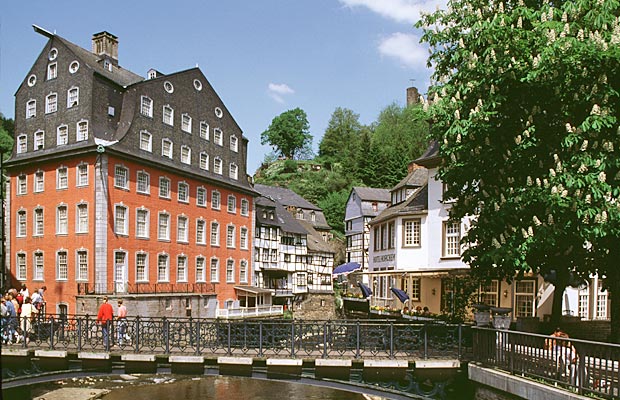
Düren is a town between Aachen and Cologne on the river Rur. The main sites are: Burgau Castle (Schloss Burgau), Dicker Turm (“Fat Tower”, a remain of the old city’s fortifications), Annakirche (St. Anne Church), Marienkirche (St. Mary Magdalene Church), a monument to Bismarck and the Leopold Hoesch Museum (contemporary art).
On the drive here from Moncshau, I passed a gigantic hole in the ground, a open-pit coal mine, the Tagebau Hambach mine. It produces soft brown lignite coal, or “braunkohle,” for its equally massive coal-fired power plant that is visible on the horizon. The four brown coal pits that RWE Power owns in this region of northwest Germany have expanded across the landscape like a creeping fungus, consuming forests, fields, towns, roads and even a river along the way. In most cases the mine’s expansion goes smoothly for the company, aided by a long-standing “Mountain Law” that basically gives mines eminent domain-type rights to seize land and compensate landowners.
The scale of the Hambach pit is mind-boggling, on par with the giant strip mines and mountaintop removal operations in the US, and startling amidst the otherwise lush green farm fields and forests. It’s about 33 square miles wide and 438 feet deep producing almost 100 million of tons of coal a year. Three hundred-foot-tall “diggers” or “baggers” stationed throughout the pit scrape the crumbly golden earth and the damp, dark seams of coal onto conveyor belts.
Coal mining has a long history in this part of Germany. People here dug up coal to burn for heat and cooking as far back as Roman times. In the 1800s and 1900s, coal fuelled massive industrial growth in North-Rhine Westphalia. It helped build the steel and weapons empire of the Krupp family who supplied Hitler with artillery. It still exists today as the multi-national ThyssenKrupp.
Most of the mines tapping deep seams of “hard coal” or “stone coal” (the type commonly found in the US) have closed in past decades since it is much cheaper to import such coal from places like Russia, Poland, Colombia, and South Africa. But mining the shallow lignite brown coal is relatively cheap. Brown coal looks more like petrified wood than what most people think of as coal. Since it is moist and heavy, it can only be economically transported short distances and is hence burned in power plants near the mine sites. Brown coal also burns dirtier than “hard coal,” meaning that the farmers in this area and the residents of nearby towns such as Lamersdorf and Sindorf and cities like Duren and Cologne are exposed to significant levels of fine particulate matter and other air pollutants.
The plants also emit high levels of carbon dioxide, an irony since Germany has gained much acclaim for its aggressive adoption of renewable wind and solar energy. Wind turbines can be seen in every direction beyond the brown coal pits; solar panels are installed on many farmhouse roofs around the mines, and there is even a large county-owned solar farm right outside the RWE coal plant near Duren. But given the reliance on dirty brown coal – which in 2011 provided a quarter of the country’s electricity – the widespread adoption of renewables is nearly meaningless if the country continues to expand its overall energy consumption and get a significant portion of it from brown coal.
Germany’s few remaining hard coal mines will close by 2018 when crucial government subsidies end, but brown coal mines are scheduled to operate through 2045. Part of the reason for Germany’s continued reliance on coal, particularly brown coal, is the country’s popular decision to close all nuclear plants by 2022. The country needs other types of power to fill the energy gap created by doing away with nuclear power. There is still not enough renewable energy available and generating power from natural gas in Europe (unlike in the US) is more expensive than coal.
Observations on Germany
1. Many Germans smoke cigarettes, but few vape. A pack of 20 cost 6 euros in 2019.
2. Winter. In western Germany (traveled for 7 days in January), rarely snows, temperature around 0. Below zero at night low
3. McDonalds. At a McDonalds west of Cologne at 6pm on a Sunday night, the lot was full – I counted 63 cars and there was a constant line of 8-10 cars in the Drive through. A night out in Germany.
4. This area has a large Turkish population.
5. Bicycles are very popular and ridden throughout the winter. But just as in the Netherlands, many bad habits – no helmets, earbuds and headphones, texting when riding etc.
COLOGNE (pop 1.06 million) German: Köln, pronounced [kœln] is the largest city of Germany’s most populous federal state of North Rhine-Westphalia, and the fourth most populous city in Germany after Berlin, Hamburg, and Munich. The largest city on the Rhine, Cologne is about 45 kilometres SE of Düsseldorf and 25 kilometres NW of Bonn.
The city’s famous Cologne Cathedral (Kölner Dom) is the seat of the Catholic Archbishop of Cologne. There are many institutions of higher education in the city, most notably the University of Cologne (Universität zu Köln), one of Europe’s oldest and largest universities, the Technical University of Cologne, Germany’s largest university of applied sciences, and the German Sport University Cologne, Germany’s only sport university.
History. Cologne was founded and established in Ubii territory in the 1st century AD as the Roman Colonia Claudia Ara Agrippinensium, the first word of which is the origin of its name. “Cologne”, the French version of the city’s name, has become standard in English as well. The city functioned as the capital of the Roman province of Germania Inferior and as the headquarters of the Roman military in the region until occupied by the Franks in 462. During the Middle Ages it flourished on one of the most important major trade routes between east and west in Europe. Cologne was one of the leading members of the Hanseatic League and one of the largest cities north of the Alps in medieval and Renaissance times.
Prior to World War II the city had undergone several occupations by the French and also by the British (1918–1926). Cologne was one of the most heavily bombed cities in Germany during World War II, with the RAF dropping 35,268 tonnes of bombs on the city. The bombing reduced the population by 95%, mainly due to evacuation, and destroyed almost the entire city. With the intention of restoring as many historic buildings as possible, the successful postwar rebuilding has resulted in a very mixed and unique cityscape. Most cities in Germany have an old town – Cologne’s is smaller than most, as after WW II, most landowners either chose not to rebuild in the traditional style, or material wasn’t immediately available. Still, there is plenty to love about the few streets that remain on the banks of the Rhine, not the least of which is the architectural gem that is the Groß Sankt Martin church.
Cologne is a major cultural centre for the Rhineland; it hosts more than 30 museums and hundreds of galleries.
Cologne Card. Gives entrance over 48 hours to almost all museums in Cologne. Public transport is free only on the first day. At €18, it is a great deal. I didn’t keep track of the costs of the individual museums but probably used four times its value.
My first day in Cologne was a Monday and all museums were closed, so I saw the things non museum and away from the centre.
Cologne Cathedral (Kölner Dom, officially Hohe Domkirche Sankt Petrus, English: Cathedral Church of Saint Peter) is a Catholic cathedral and a renowned monument of German Catholicism and Gothic architecture. It was declared a World Heritage Site in 1996. It is Germany’s most visited landmark, attracting an average of 20,000 people a day, and is currently the tallest twin-spired church at 157 m (515 ft) tall.
Christianity in Cologne dates back to 313. Construction of Cologne Cathedral began in 1248 but was halted in 1473, unfinished. Work did not restart until the 1840s, and the edifice was completed to its original Medieval plan in 1880. No generation of builders departed from the original masterplan even though none would see its completion. The cathedral is the largest Gothic church in Northern Europe and has the second-tallest spires. The towers for its two huge spires give the cathedral the largest façade of any church in the world. The choir has the largest height to width ratio, 3.6:1, of any medieval church.
Highlights were the double aisles on each side, its immense height, the gold Shrine of the Magi (dates from ~1200), the wonderful stained glass and the altarpiece of St Agil0lph. Free

Cologne Hbf. The station is an important local, national and international hub, with many ICE, Thalys and Intercity trains calling there, as well as Regional Express, Regional Bahn and local S-Bahn trains. EuroNight and DB NachtZug night services also call at the station. It has frequent connections to Frankfurt by way of the Cologne-Frankfurt high-speed rail line, which starts in southern Cologne. On an average day, about 280,000 travellers the station, making it the fifth busiest station in Germany. The station is situated next to Cologne Cathedral.
Cologne Cable Car. Permanently closed.
Kolner Senfmuseum (Mustard Museum). The only museum open in Cologne on Monday because it is private, is visitable by tour, only in German, when 4 people have arrived. See the historic mustard mill and taste many kinds of gourmet mustards.. Pots of mustard are available for €7.50. Tour €2.50
Synagogen-Gemeinde Koln. Cologne has one of the largest Jewish communities in Germany. In 1938m there were 7 synagogues and a thriving community with schools etc. in Cologne – since the war there is only one. According to the latest case law, the municipality must financially support other Jewish communities in its catchment area in its task as state association.
The main synagogue in Cologne, it is visitable by appointment only – email info@sgk.de a copy or scan of your passport, your full contact data (address and mobile phone no.), your place and date of birth and when you will be in Cologne to visit the Synagogue. We will then get back to you for an appointment.”
I didn’t do this and the very tight security at the front desk took my details. I had a wonderful personalized tour given by a young woman of Russian descent (as are 90% of the 4000 strong congregation). The interior of the synagogue was destroyed at Kristallnacht in 1939 and the west side was destroyed by a bomb in the war. It was reconstructed after the war in a much simpler style. Free

History of the Jewish community in Cologne. A Jewish community in Cologne was first mentioned in 321. That year, Emperor Constantine allowed Jewish citizens to be elected to the Curia of Roman Cologne . Many Cologne Jews fell victim to the German crusade of 1096 . During a plague epidemic in 1349 many Cologne Jews were murdered again. In 1424 the Jews were expelled from the city; until the end of the 18th century there was no Jewish community in Cologne.
The first Jews were able to return to Cologne in 1798, after the city was occupied by French troops in 1794. A new Jewish religious community was founded in 1801 – in 1815, the number of parishioners was 150, in 1850 – 1300, in 1895 – 8000 and in 1933, there were 18,281 members. On March 28, 1938, the community was denied corporate rights and demoted to an association. In October 1941, the first deportations to Theresienstadt started and more than 7,000 Jews of Cologne were killed.
On March 6, 1945, Cologne was taken by the American troops and 50 Shoa survivors founded the new community. 70 other survivors were brought back to Cologne and over time, about 300 returned to Cologne from other concentration camps. The synagogue, destroyed during the war and now restored, was consecrated on September 20, 1959.
The influx of Jewish immigrants after the collapse of the Soviet Union also increased the number of members.
A special highlight was the 2005 visit of Pope Benedict XVI for the first synagogue visit of a pope in Germany.
Giga Center. This video game arcade/bar/restaurant has all types of games from pin ball to table games to pool. Free
Cologne Central Mosque. Don’t miss this – an architectural wonder from the outside and in. Free
Cologne Central Mosque. Don’t miss this – an architectural beauty inside and out. Climb the stairs to the “plaza” to enter. It is the largest mosque in Germany and has been criticized for its size, particularly the height of the minarets and is not in the Ottoman architecture style. It is constructed with a large central dome, partial domes coming off the sides and two unusual minarets – hollow and open on one side giving a spiral appearance. The inside can only be seen to be believed.
The 48,000-square-foot mosque cost £15–20 million to build, aiming to house 2,000 to 4,000 worshippers. The mosque was funded by a branch of the Turkish government’s religious affairs authority, bank loans, and donations from 884 Muslim associations.
It has a concrete and glass dome, and two 55 meter high minarets. There is a bazaar on the ground floor.
President of Turkey Recep Tayyip Erdoğan attended the opening in 2010. 

Day 2. This was a big museum day. I did them in this order.
Rautenstrauch-Joest Museum. This ethnographic museum explores the differences and similarities of world cultures, past and present. Divided into two areas – Understanding the World and Shaping the World – the exhibition looks at all aspects of human cultures, including living concepts, religion and identity. The interactive multimedia displays allow visitors to immerse themselves in foreign cultures and take different perspectives.
Unfortunately this is one of the most poorly labeled museums: almost all is in German and you can rarely find where in the world the piece came from. The exhibits themselves have wonderful pieces and it seemed that I had been to almost all the places.
Schnütgen Museum is devoted to Christian religious art, mainly medieval, but some parts of the collection, such as its textiles and prints, extend from antiquity to the modern period. In 1906, the collection of Alexander Schnütgen (1843–1918), a Catholic priest and theologian, was donated to the city, and the collection has continued to expand, so that until the opening of a new building in 2010, only about 10% of its 13,000 items could be displayed. Now some 2,000 objects are on display in 1900 sq. metres of gallery space.
Since 1956, the museum has occupied the large Romanesque church of St. Cäcilien, dating from 1130–60, with murals from about 1300.
Highlights include a Romanesque tympanum from St Cecilia’s herself, several large wooden crucifixes, including the 11th century Cross of St George’s, well as a large collection of early bronze ones, a late Carolingian evangeliary of 860–880, and a single leaf from the English St Albans Psalter, the “Comb of St Heribert” is a 9th-century ivory liturgical comb, and the “Harrach Diptych” a 810 Carolingian ivory, ivories, stained glass, textiles including vestments, metalwork and paintings.
Angewandte Kunst Köln (Design or Applied Arts Museum). With minimal but effective exhibitions: table reading lamps, variety of design furniture and a large exhibition of Andy Warhol (he did many album covers).
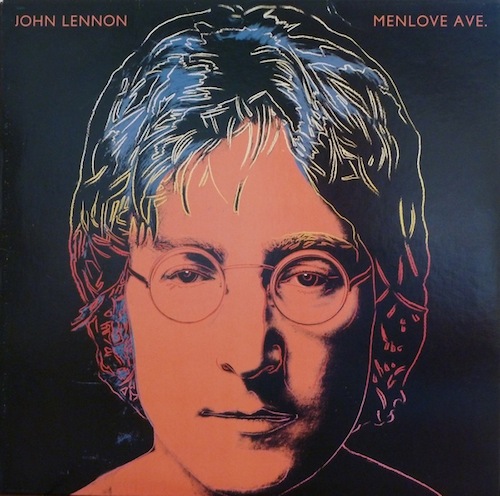


Kolumba (previously “Diocesan Museum”) is an art museum located on the site of the former St. Columba church. It was founded by the Society for Christian Art in 1853, is now run by the Archdiocese of Cologne and was destroyed in World War II. The collection includes paintings, drawings, prints, sculptures, decorative art and religious icons from Late Antiquity to the present. Apart from a few works on permanent display, the presentation features a regularly changing selection of the museum’s holdings. The items are generally displayed without accompanying text, and in no particular chronological or stylistic order.
Gallerie Buchholz. This private art gallery next door to El-De Haus is fronted by Buchholz’s antiguanarian bookstore full of paraphernalia. The “gallery” is 2 small rooms at the back. The show was two projected pictures – neither of which I had a clue abuot.
El-De Haus. From 1935-45 this building was the headquarters of the Secret State Police of Nazi Germany, the Gestapo. Now the building is home to Cologne’s National Socialist (Nazi) Documentation Center. Media stations incorporate interviews with contemporary witnesses, historical films, newspaper articles, and other resources to document Cologne during the Third Reich. In the basement, former prison cells and torture rooms have been left in their original condition, and inscriptions of former inmates can still be seen on the walls serving as a reminder of the harrowing past.
Unfortunately the top floors of the spartan concrete building are only in German (there is an audioguide but I don’t like them as they often too wordy. The basement with the cells is in English.
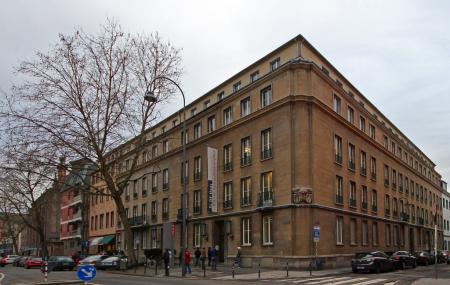
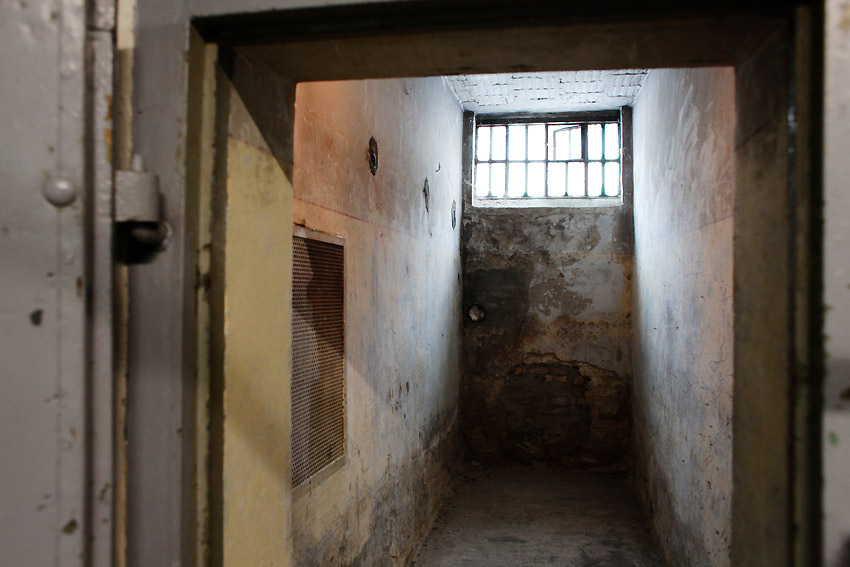
Museum Ludwig. After World War II, Josef Haubrich donated his modern art collection to the city of Cologne, including pieces by Otto Dix, Emil Nolde and Marc Chagall. Thirty years later, Peter and Irene Ludwig gifted the city of Cologne another 350 art pieces, on condition that the city would build a new museum. Their donation lay the groundworks for what has become one of the most significant museums of modern and contemporary art in Europe and is a must-stop for tourists. The Museum Ludwig boasts the largest exhibition of pop art outside the US: 900 Picassos, and important works by Andy Warhol, Roy Lichtenstein, Alexander Rodchenko, and others.
This is a beautiful building with wonderful lighting – it has them all.
Roman-Germanic Museum. Located right next to Cologne Cathedral, it is dedicated to archaeological artefacts from 100,000 years of settlement history in the Rhineland area and Cologne’s Roman heritage. The centrepiece of the collection is the renowned Dionysus Mosaic. The museum was built on the foundations of a Roman villa, and around the 70 metre masterpiece which once decorated the floor of the old dining hall. Thirty-three years after the mosaic was unearthed in 1941, the museum opened its doors to the public.

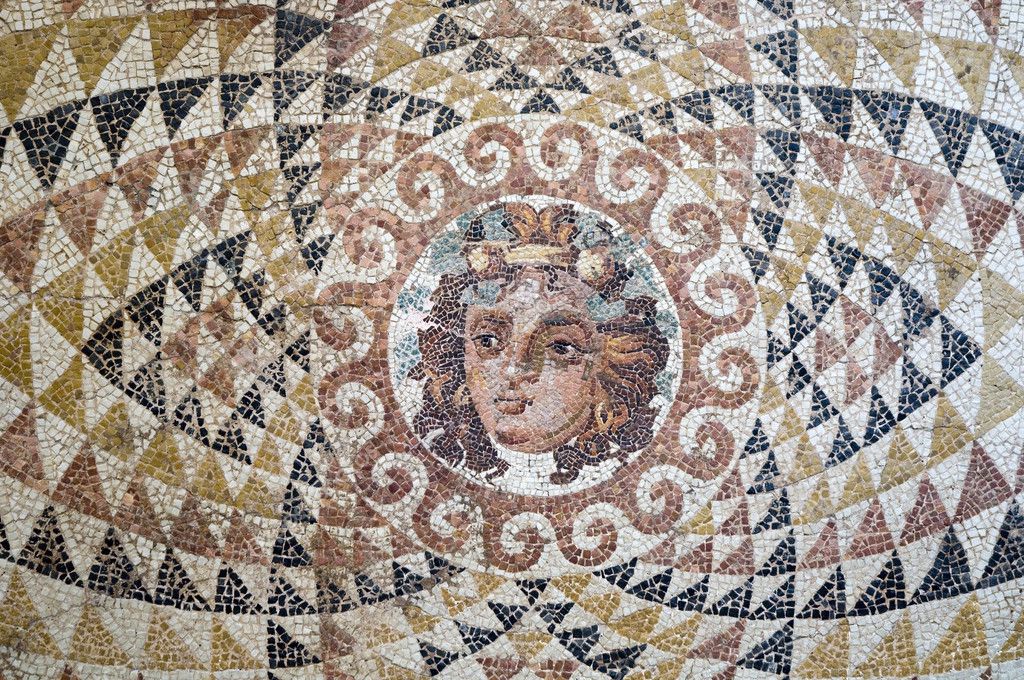
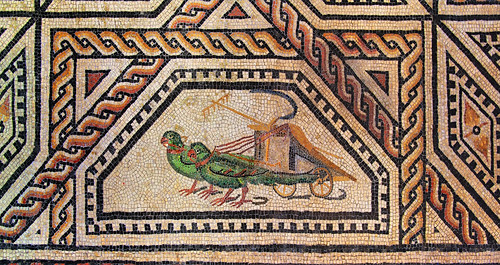
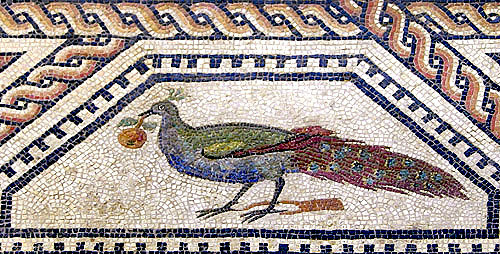
Some other highlights include the world’s largest collection of Roman glass vessels, stone tools and weapons from the Neolithic age, filigree Merovingians goldsmith’s art and the reconstructed 15 metre (50ft) high tomb of Lucius Poblicius, a Roman veteran legionary, which dates back to 40AD. Unfortunately it was closed for renovations.
Wallraf-Richartz-Museum. In 1824, university professor and art collector Ferdinand Franz Wallraf bequeathed his collection to the city of Cologne. Thirty years later, Cologne merchant Johann Heinrich Richartz donated the funds to build a museum to house the precious artworks, giving the museum its name.
Over three floors, Cologne’s oldest museum houses European art spanning from the Middle Ages to the early 20th century. Besides the most extensive collection of impressionist and neo-impressionist art in Germany, composed of prominent artworks by Monet, Renoir, Morisot, van Gogh, Cézanne, Rembrandt, and Munch, the museum features several baroque paintings by Rubens and Rembrandt. Lochner’s “Madonna in the Rose Bower,” also known as “kölsche Mona Lisa,” is the most notable piece in the Gothic collection.
Farina Fragrance Museum. Founded in 1709, this is the world’s oldest fragrance factory still standing and the birthplace of the original Eau de Cologne. Over several floors, the museum provides a very detailed insight into the production methods of perfume throughout the various stages. The focus is primarily laid on Eau de Cologne, showing the distillation apparatus once used. As copyright didn’t exist in those days, a great deal of imitations and forgeries of Eau de Cologne rapidly appeared on the market. It is situated across from Cologne City Hall, and near the famous Wallraf-Richartz-Museum.
Visit only by guided tour available on the hour in rotating languages: www.farina.org/visit-the-fragrance-museum/. Private and not included in the Cologne card. €5
German Sports and Olympic Museum takes visitors from ancient Greece to the modern day and remembers leading athletes, triumphs, and defeats in the history of sports. The permanent exhibition features medals, certificates, clothes, sports equipment, including Michael Schumacher’s Formula One Benetton Renault race car, and other memorabilia. A handful of themed areas focus on the Olympics, German gymnastics, and new trend sports, among others. Active participation is encouraged. On the roof, visitors can play football, tennis, and volleyball while enjoying views over the Rhine. Private and not included in the Cologne card €6
Imhoff-Schokoladenmuseum (Imhoff chocolate museum) was opened by Hans Imhoff in 1993 showing the entire history of chocolate, from its beginnings with the Olmecs, Maya and Aztecs to contemporary products and production methods.
Since 2006, the Swiss chocolate manufacturer Lindt & Sprüngli has been its partner in producing exhibits. Highlights are the tropicarium with cacao trees, miniature versions of machines used in the production of chocolate, the 3m-high chocolate fountain – an employee dips wafers into the liquid chocolate and distributes them to the visitors and a collection of historical chocolate vending machines. Private, it is not included in the Cologne card €10.50 reduced
Museum of the Cologne Carnival. Outside the city centre, this museum is dedicated entirely to Cologne’s ‘fifth season’. From the history of the much-loved festival to traditional costumes, recordings of festive songs and explanations of essential vocabulary, the grounds cover all questions both Carnival enthusiasts and novices would ask. Note that it is open on select days each month and visitors are advised to check the website beforehand: www.koelnerkarneval.de beforehand. €6
Kölnisches Stadtmuseum (Cologne City Museum).
Castles of Augustusburg and Falkenlust at Brühl About 12kms south of Cologne on the way to Bonn, this historical building complex in Brühl is listed as a UNESCO cultural WHS since 1984. The buildings are connected by the spacious gardens and trees of the Schlosspark. The Max Ernst Museum is located nearby.
The palaces were built at the beginning of the 18th century by the Archbishop-Elector of Cologne, Clemens August of Bavaria of the Wittelsbach family. It is an outstanding Rococo creation that used German, Italian and French painters, architects, sculptors and plasterters to create an opulent masterpiece. It is an outstanding example of the 18th century German court.
The main block of Augustusburg Palace is a U-shaped building with three main storeys and two levels of attics. Highlights include the magnificent staircase designed by Johann Balthasar Neumann and the gardens and the Falkenlust hunting lodge built from 1729 to 1740.
From shortly after World War II until 1994, Augustusburg was used as a reception hall for guests of state by the German President, as it is not far from Bonn, which was the capital of the Federal Republic of Germany at that time.

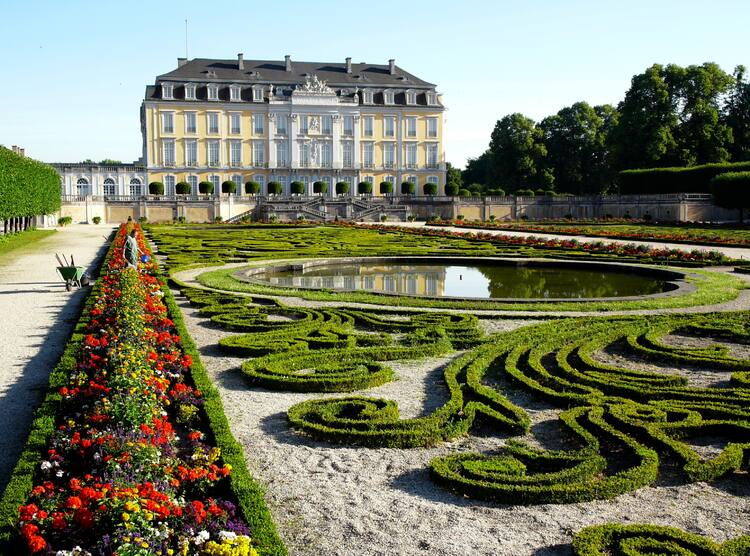


BONN (pop 300,000) is on the banks of the Rhine about 24 km SSE of Cologne. Because of a political compromise following German reunification, the German federal government maintains a substantial presence in Bonn, and the city is considered a second, unofficial, capital of the country.
History. Founded in the 1st century BC as a Roman settlement, Bonn is one of Germany’s oldest cities. From 1597 to 1794, Bonn was the capital of the Electorate of Cologne. Ludwig van Beethoven was born in Bonn in 1770. From 1949 to 1990, Bonn was the provisional capital of West Germany. From 1990 to 1999, Bonn served as the seat of government – but no longer capital – of reunited Germany.
The headquarters of Deutsche Post DHL and Deutsche Telekom are in Bonn. The city is home to the University of Bonn and a total of 20 United Nations institutions, including headquarters for Secretariat of the UN Framework Convention Climate Change (UNFCCC), the Secretariat of the UN Convention to Combat Desertification (UNCCD), and the UN Volunteers programme.
Alexander Koenig Research Museum. This is a zoological museum with stuffed animals from all over the world. €5
Arithmeum. This museum is all about calculating machines, from the abacus, Quipui (the Inca did not have the wheel, horses or written text, but had this complicated set of strings with knots to convey distances), the first calculators (by definition had to automatically carry ten) to modern computers. Of the fascinating early machines, many could be operated. The 4 floors are surrounded a lot of abstract art. €3.
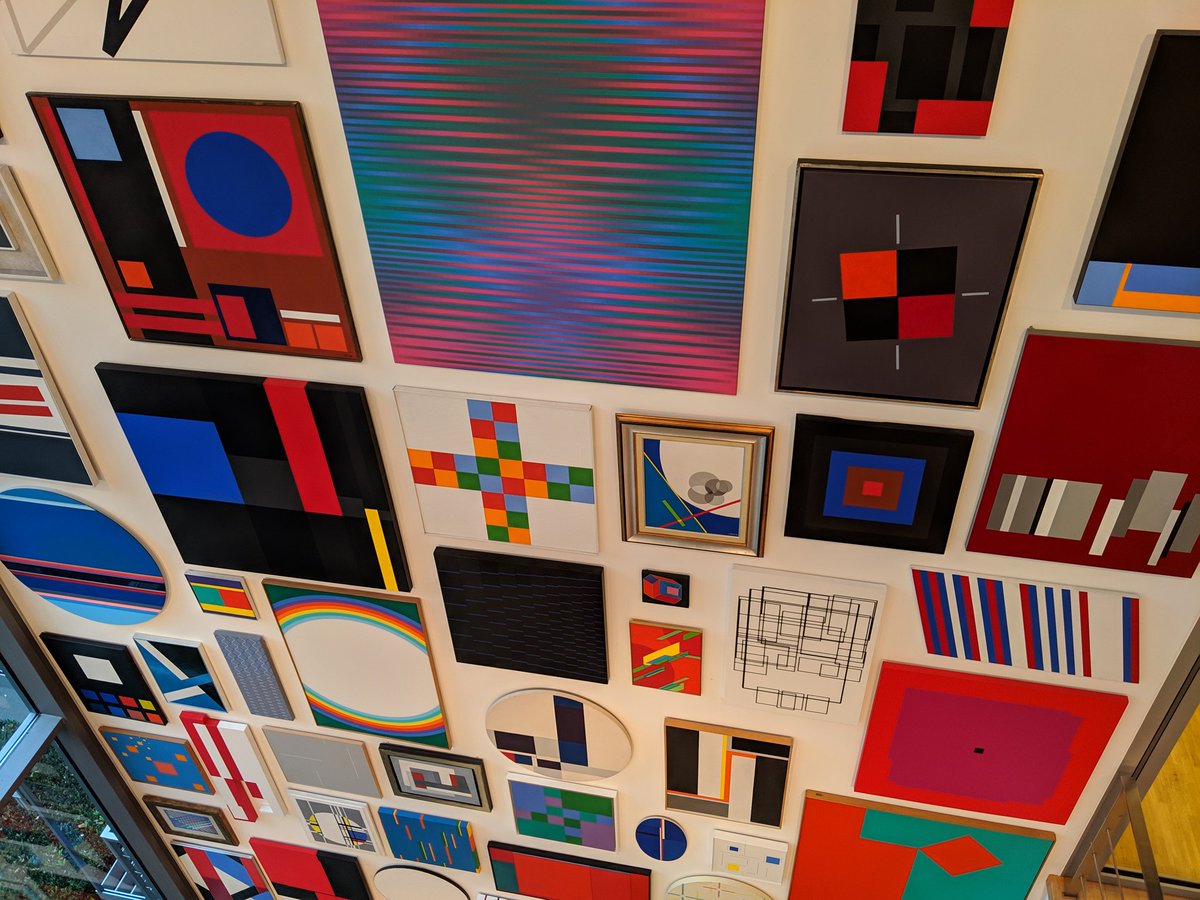
Kunst und Ausstellunghalle der Bundesrepublik Deutschland. This major art gallery had 3 major exhibits each €10: Ernst Dirchner (1880-1938), paintings and wood sculpture with an African influence, Kino der Modene, a film and photos about the Weimarer Republic and Malerfursten the main gallery with mainly German artists. €15
Post Tower is the headquarters of the logistic company Deutsche Post DHL with the two brands postal services for Germany Deutsche Post and the worldwide logistics company DHL. It is 162.5-metre high and 41-stories, the eleventh tallest skyscraper in Germany, and the tallest in Germany outside of Frankfurt am Main.
The building is located at the river Rhine and has about 55,000 m² office surface. Construction phase was May 2000 to December 2002, 80,000 m³ of concrete and 16,000 tons of structural steel were used in the building shell. The building dimensions are; height: 162.5 m, width: 41.0 m, length: 81.1 m (with ring walls 86.55 m), weight: 300,000 t. The building has the ground floor, 40 upper floors and 5 underground levels. The base of the Post Tower has the shape of two staggered semi-ellipses of two shifted circle segments. Most office walls, doors and the floors of skygardens and elevators are therefore made of 93,000 m² glass used.
Climate control. A double skin glass façade with about 1.2 m cavity between the external skin and the primary façade, provides natural ventilation regulated by venetian blinds. The north-facing windows at the front are smooth, the glass windows on the south-facing façade are gently sloping to allow a better flow of aird. Via a decentralized underground convector, the external air is sucked in from the space between the façades, then it is conditioned and fed back into the offices. The air also reaches internal areas of the building through doors and corridors. The office air is filtered into the Sky Gardens, warms up those areas and then is filtered back outside via façade flaps on the east and west sides of the Sky Gardens. The double skin façade enables huge energy savings. The benefits gained by the Post Tower in using up to 130 liters of groundwater per second to heat and cool the concrete core. The remaining energy requirement is covered by connection to the district heating system, refrigerating equipment and heat pumps.

I did then drove ~140kms to Braunfels, a small town north of Frankfurt, to pick up all the remnants left in my original California after my accident north of Stockholm. An auto wrecker there had purchased the demolished van, shipped it here and then sold it for a good profit in Lithuania. I then drove to Koblenz, about 100kms east in Rhineland-Palatinate.
NOMAD MANIA RHINE WESTPHALIA
World Heritage Sites:
Carolingian Westwork and Civitas Corvey (Imperial Abbey of Corvey was a Benedictine abbey on the River Weser, 2 km northeast of Höxter, one of the Imperial abbeys of the Holy Roman Empire from the late Middle Ages until 1792 when the abbey was dissolved and Corvey converted into a prince-bishopric. It was in turn secularized in 1803. In 2014, the former abbey was listed as a UNESCO World Heritage Site.
History. In the Saxon Wars which lasted more than thirty years after 772, Charlemagne, king of the Franks, was eventually victorious, adding the Saxon territory to his empire and starting the Christianisation of the Saxon people.
In 822 they moved to the current location and became known as Nova Corbeia. The first stone church was consecrated in 844. In 873-885, the Westwerk that is still extant today was constructed. Corvey thus became “one of the most privileged Carolingian monastic sanctuaries in the 9th-century Duchy of Saxony”. It soon became famous for its school, which produced many celebrated scholars.
Otto I in 940 granted powers of enforcement over the population of peasants that were to seek refuge in the fortress built in the monastery’s lands. The abbey participated in attempts to reform the Catholic Church during the 11th century. It was the dominant theological centre in the region and established numerous subsidiary abbeys.
A final period of prosperity followed under the leadership of Wibald (abbot from 1146–58) when Westwerk was reconstructed in the High Romanesque style, and the Carolingian three-tower set-up was replaced with twin towers. By the mid-12th century, a substantial town (also named Corvey) had grown up around the abbey. In 1265, the neighbouring town of Höxter, jealous of its nearby rival and its Weser bridge, allied itself with the Bishop of Paderborn and their troops destroyed the town of Corvey and damaged the abbey. The town never recovered and over the following decades reverted to a small village. This event marked the beginning of the long period of decline of the abbey. The Reformation threatened Corvey as it did the other ecclesiastical territories in north-west Germany but the abbey did survive somewhat precariously as a Catholic state. In 1634, during the Thirty Years War the abbey was sacked by Imperial troops who also laid siege to Höxter. It was later demolished. Only the Westwerk remained.
in 1665, reconstruction began and the Carolingian church was replaced by a Gothic building, with the exception of the Westwerk. In 1792, Corvey ceased to be a Benedictine abbey and was raised by pope Pius VI to the status of a prince-bishopric.
The famous abbey library has long since been dispersed, but the “princely library”, an aristocratic family library, containing about 74,000 volumes, mainly in German, French, and English survives in the Schloss. One striking feature of the collection is the large number of English Romantic novels.
The present owner of the palace is Viktor, 5th Duke of Ratibor and 5th Prince of Corvey, Prince of Hohenlohe-Schillingsfürst-Metternich-Sándor (b. 1964).
Castles of Augustusburg and Falkenlust at Brühl
Cologne Cathedral
Zollverein Coal Mine Industrial Complex in Essen
Sights:
Externsteine is a distinctive sandstone rock formation located in the Teutoburg Forest, near the town of Horn-Bad Meinberg in the Lippe district. The formation is a tor consisting of several tall, narrow columns of rock which rise abruptly from the surrounding wooded hills. The stones were used as the site of a hermitage in the Middle Ages, and by at least the high medieval period were the site of a Christian chapel. Under the Nazi regime, when the Externsteine became a focus of Nazi propaganda. Today, they remain a popular tourist destination and also continue to attract Neo-Pagans and Neo-Nazis.
Freudenberg, Westphalia. The “Alter Flecken” is Freudenberg’s downtown core, built wholly of half-timbered houses. It gives the impression of a small town from the 17th century and is a “Building monument of international importance”. The Evangelical church, after Freudenberg got its own parish in 1585, was built as a “fortress church” but the belltower is the only one of the former castle’s towers still left standing.
The church in Oberholzklau was built early in the 13th century and is worth seeing as a Romanesque church whose architecture nevertheless plainly shows transition to Gothic. The rectory next door, built in half-timbered style, is from 1608.
Monschau.
XL:
Elten and Tuddern
Railway, Metro, Funiculars, Cable Cars:
ICE 3 Routes
Thalys Routes
Wuppertal Suspension Railway (Schwebebahn)
Castles, Palaces, Forts:
Brühl: Augustusburg Palace
Nordkirchen: Nordkirchen Palace
Religious Temples: Höxter: Corvey Abbey
Modern Architecture: Buildings and Monuments: Karl Junker House, Lemgo
Caves: Atta Cave. (Attendorn Dripstone Cave) is one of the largest dripstone caves in Germany. The cave was discovered during the quarrying of limestone in 1907. Today the Atta Cave is the most-visited show cave in Germany, receiving around 350,000 tourists per year, and is an important economic factor for the town. Amongst its attractions are numerous calc-sinter flowstone drapes, colourfully tinctured by iron oxides. There are also many stalactites, stalagmites and stalagnates. Several pieces of calcite crystal formations were moved into the public area of the cave in order to be displayed there.
Entertainment/Things to do:
Theater der Welt (Theatre of the World)
Xanten: Schwerter, Brot und Spiele
Villages and Small Towns:
Assinghausen
Monschau. Museum Rotes Haus.
European Cities:
Düren
Gelsenkirchen
Hagen/Iserlohn
Hamm
Krefeld
Leverkusen
Mönchengladbach
Mülheim an der Ruhr. Aquarius Water Museum
Münster
Oberhausen. Entertainment/Things to do: Gasometer
Paderborn
Siegen
AACHEN
World Heritage Site: Aachen Cathedral
Museums:
Couven Museum
Ludwig Forum for International Art
Religious Temples: Aachen Cathedral
Entertainment/Things to do:
Paintballpark Aachen
BIELFELD/GUTERSLOH
Entertainment/Things to do:
Bielefeld Farmhouse Museum
Dr. Oetker World
BOCHUM/HERNE/BOTTROP/RECKLINGSHAUSEN
Railway, Metro, Funiculars, Cable Cars: Bochum-Gelsenkirchener Straßenbahn
Planetariums: Planetarium Bochum
Botanical Gardens: Botanical Garden of Ruhr University
BONN
Museums:
Alexander Koenig Research Museum
Arithmeum Bundeskunsthalle
Deutsches Museum
Kunst und Ausstellunghalle der Bundesrepublik Deutschland
Post Building
COLOGNE
World Heritage Sites: Cologne Cathedral
Railways, Metros: Cologne Cable Car Cologne Hbf Cologne/Bonn Trams
Museums:
Decorative Arts Museum
EL-DE Haus
Fragrance Museum
German Sports and Olympic Museum
Imhoff-Schokoladenmuseum
Kolumba
Museum for East Asian Art
Museum Ludwig
Museum of the Cologne Carnival
Mustard Museum
National Socialism Documentation Center
Rautenstrauch-Joest Museum
Roman-Germanic Museum
Schnütgen Museum
Wallraf-Richartz Museum
Religious Temples:
Cologne Cathedral
Cologne Central Mosque
Roonstraße Synagogue
Entertainment/Things to do:
Daniel Buchholz,
Cologne Giga Center
DORTMUND/LUNEN
Dortmund Hbf
Museums:
German Football Museum
LWL Industrial Museum
Museum Ostwall
DUISBURG
Duisburg Stadtbahn
Lehmbruck Museum
DUSSELDORF/NEUSS/RATINGEN
Railways: Dusseldorf Hbf Düsseldorf Rheinbahn
Museums:
Film Museum
Goethe Museum
Hetjens Museum
Kunsthalle
Kunstsammlung Nordrhein-Westfalen Museum Kunstpalast
Castles, Palaces, Forts: Schloss Benrath
Things to Do: The Düsseldorfer Schauspielhaus
ESSEN
World Heritage Sites: Zollverein Coal Mine Industrial Complex in Essen
Essen Hbf
Museums:
Museum Folkwang
Red Dot Design Museum
Grugapark Botanical Garden
WUPPERTAL/SOLINGEN/REMSCHEID
Entertainment/Things to do: Wuppertal: Waldfrieden Sculpture Park
